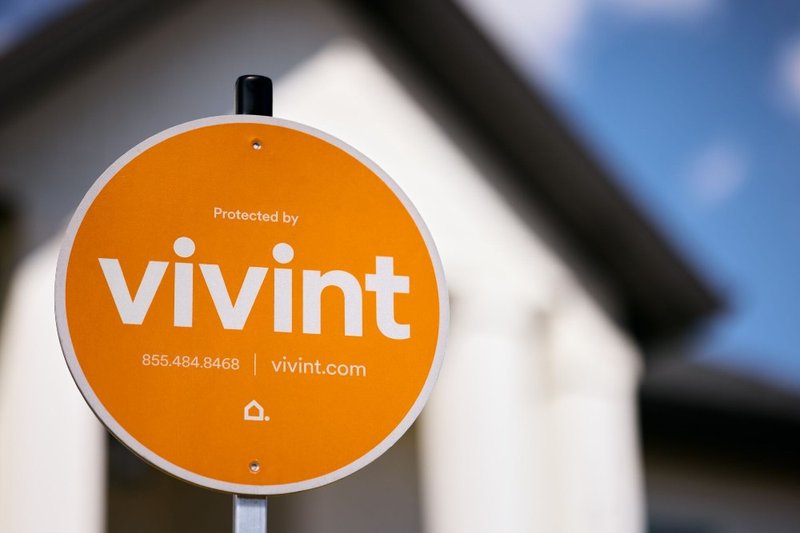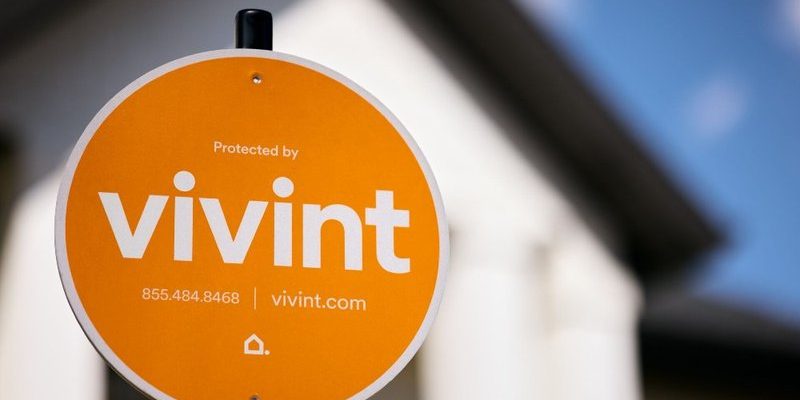
Think of your Vivint security system as the bouncer to your digital home club. You want it to recognize you, let you in, and keep everyone else out. But how do you prove you’re the owner—or even entitled to register your system in the first place? That’s the heart of this question. Let’s unpack what really matters when registering your Vivint setup, how receipts fit in, and what to do if yours is lost in the laundry.
How Vivint Security System Registration Works
Registering your Vivint system isn’t quite like signing up for a streaming service, where an email and password will do. Instead, it’s more like syncing a new smart device—there are a few hoops to jump through, and documentation often matters. When you purchase a Vivint system through official channels (like their website or an authorized retailer), registration is often handled during installation. The technician will connect your devices, pair sensors, walk you through settings, and make sure your account is properly activated.
But maybe you’re going the DIY route, or you bought your system pre-owned. Here, the registration process gets a bit more hands-on. You’ll likely need to set up a Vivint account online, enter the system’s serial number or code, and sometimes prove you’re the rightful owner. This is where many folks wonder: does Vivint actually care if you have the original receipt, or is something else more important?
For most new customers, Vivint prioritizes the device’s serial number, your address, and occasionally proof of purchase—especially if there are warranty or troubleshooting issues down the line. But for activation or pairing, the company tends to care less about receipts and more about making sure the system isn’t already registered to someone else.
When Do You Actually Need a Receipt?
Here’s the thing: needing a receipt isn’t as black-and-white as you might think. Vivint, like many security brands, doesn’t usually ask for your receipt just to register your system. The process relies much more on device codes, serial numbers, and account info.
You might need a receipt in these situations:
- Warranty claims – If your keypad stops working, or a sensor won’t reset even after a battery swap, Vivint support may ask for proof of purchase before offering repairs or replacement. This helps them confirm the device is within the warranty period.
- Ownership disputes – Say you bought the system from a previous homeowner, and registration fails because it’s still linked to their account. Vivint might ask for documentation (including a receipt or bill of sale) to confirm you’re the new owner and authorize a transfer.
- Equipment upgrades or returns – If you’re pairing new accessories or sending back faulty components, receipts sometimes come into play to show the date and details of your original purchase.
In short, for everyday registration, a receipt is helpful but not always essential. But for troubleshooting, support, or ownership issues, having that proof can make life a lot simpler.
How Vivint Verifies System Ownership
If you’ve ever tried to register a secondhand Vivint security system, you know it’s a bit trickier than just punching in a code. Vivint uses several steps to make sure the person trying to sync or register the remote system is actually authorized to do so.
Most of the time, registration is tied to:
- The system’s serial number or activation code
- Your home address (matching their database)
- An active Vivint account (which you create online or with a technician)
If everything lines up, you’re usually good to go. But if Vivint’s system shows the security hardware is already paired with another account, you’ll hit a wall. Here’s where they might request additional proof—like the original purchase receipt or a formal bill of sale. This helps prevent stolen devices from being re-registered, and protects both you and Vivint from potential security breaches.
Think of it like trying to reset a password on your email; sometimes, a simple code is enough, but if there’s any doubt, they’ll ask for more.
Lost Your Receipt? Here’s What You Can Do
Misplacing a receipt happens to everyone. Maybe you tossed it during your last spring cleaning or it faded into a ghostly blank slip in your wallet. Don’t panic! There are still ways to register or use your Vivint system.
First, check your inbox or account history if you bought from Vivint’s website. Most companies send order confirmations or digital receipts. If you went through a retail store, ask if they can reprint your proof of purchase—many stores keep digital records for a few months or even a year. If all else fails, contact Vivint’s customer support and explain the situation. Be ready with:
- The devices’ serial numbers and activation codes
- Your address and the date of purchase (even a rough estimate helps)
- Any other details—like installer names or photos of the equipment’s model/label
Vivint support staff are used to these problems. As long as you’re not trying to activate a device that’s still registered to someone else, they’re usually pretty helpful about walking you through syncing and pairing your system—receipt or not.
Registering Pre-Owned Vivint Security Systems
Buying a pre-owned Vivint security system is sort of like inheriting someone else’s puzzle—you need all the right pieces to get it working. Registration here is rarely as simple as scanning a code and calling it done. Vivint wants to make sure the previous owner is no longer using or monitoring the system, which means you’ll need to *transfer* ownership.
Here’s how it generally works:
- Contact Vivint support and mention you’re the new owner
- Provide device details, address, and, if possible, a receipt or bill of sale
- The previous owner may need to call in and confirm the transfer (or remove the device from their account)
- Once cleared, Vivint will reset and pair the system to your new account
In this scenario, having a purchase receipt or bill of sale is very helpful. It’s the proof Vivint needs to put the system under your name and ensure you’re not stuck troubleshooting for hours if something goes wrong later. If the original owner is unreachable and you don’t have documentation, Vivint might not release the system, so always double-check these details before buying used equipment.
Alternatives and Workarounds: When Receipts Just Aren’t Possible
Maybe you bought your Vivint system at a moving sale, or inherited it from a relative, and there’s absolutely no paper trail. Does that mean you’re out of luck? Not necessarily! Vivint’s customer service can sometimes offer a workaround—especially if the system isn’t flagged as active on their network.
Here are a few options you can try:
- Submit photos of the devices, their serial numbers, and your current home setup
- Provide utility bills or proof of residency that tie you to the address where the system is installed
- Request a technician visit for in-person verification and reset
If the system has been off the grid for a while and isn’t linked to any current account, Vivint is often able to reset and re-register it with enough proof that you’re the property owner. It may take a little patience, but it’s not impossible.
Even without a receipt, Vivint cares most about security, so their first priority is making sure your system isn’t already paired to someone else and that you’re not trying to slip through the cracks.
Comparing Vivint to Other Security System Brands
If you’re coming from a different security brand—say, Ring, SimpliSafe, or ADT—you might notice some similarities and differences in how registration works. Most big brands prioritize:
- Serial numbers or device codes for initial system pairing
- Ownership verification if you’re transferring or reselling hardware
- Receipts mainly for warranty and support—not for basic pairing
Universal remotes or generic smart home devices sometimes let you skip receipts altogether, but security companies are a bit stricter because those devices protect real property. Vivint sits right in the middle: no receipt required for most first-time registrations, but recommended for transfers, troubleshooting, or upgrades.
So, while you might breeze through setup with some brands, Vivint’s extra safeguards can actually be a good thing—especially if you ever need to prove your system’s status or get support fast.
Troubleshooting Registration Issues with Vivint
Here’s where things get real. Sometimes, even after you’ve jumped through all the hoops—codes entered, account created, prayers whispered—your Vivint system just won’t register.
Common issues include:
- Device already paired to a previous account
- Activation code not recognized
- Missing or mismatched serial numbers
- Account email or address errors
In these cases, a receipt usually isn’t the first thing Vivint asks for, but it helps as you dig deeper into troubleshooting with their support team. If you’re asked for documentation and can’t find your receipt, try the workarounds mentioned above. Sometimes a technician will need to visit and physically reset the system, especially if it was paired to a stubborn old account.
Patience and persistence are your best friends here. Don’t be afraid to call support twice, provide detailed info, or ask for an escalation if you hit a wall. Most users, even without a perfect paper trail, can get their system working with a little help.
Final Thoughts: Do You Need a Receipt to Register Your Vivint Security System?
If you’re still holding onto that Vivint box and wondering whether to stick the receipt on your fridge, here’s the bottom line: a receipt isn’t usually required to register your Vivint security system, but it sure makes life easier if something goes wrong. For standard setups that you buy new and install right away, focus on keeping your serial numbers, codes, and account info handy—most of the time, that’s all you’ll need.
But when things get complicated—like transferring ownership, troubleshooting, or making warranty claims—proving your purchase with a receipt or similar document can save you a lot of stress. Vivint’s process is built to protect your security, not to trip you up, but being prepared with whatever proof you can find just makes everything smoother.
So, file that receipt if you’ve got it, but don’t let its absence stop you from registering, syncing, or pairing your Vivint system. With a little patience and the right info, you’ll be up and running—and your home will be better protected for it.
